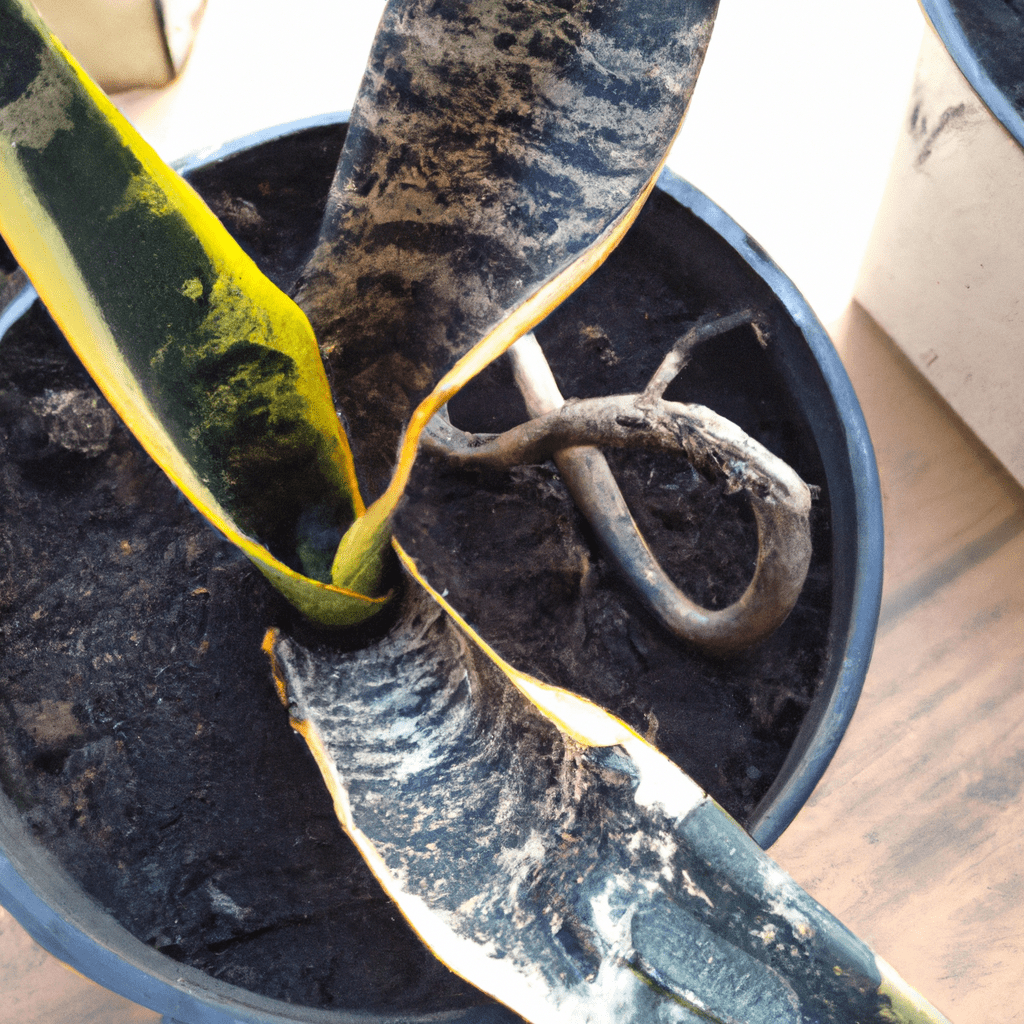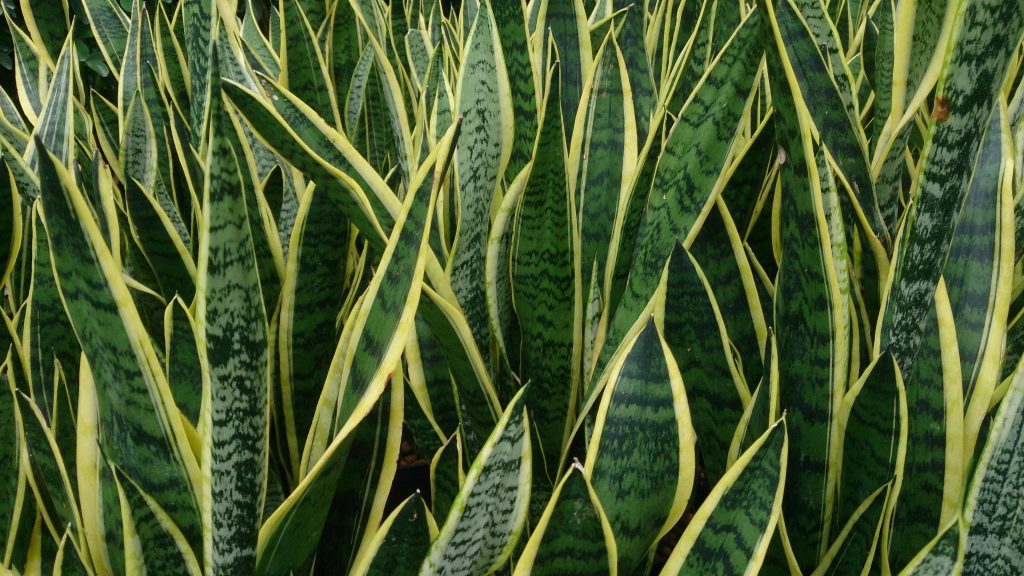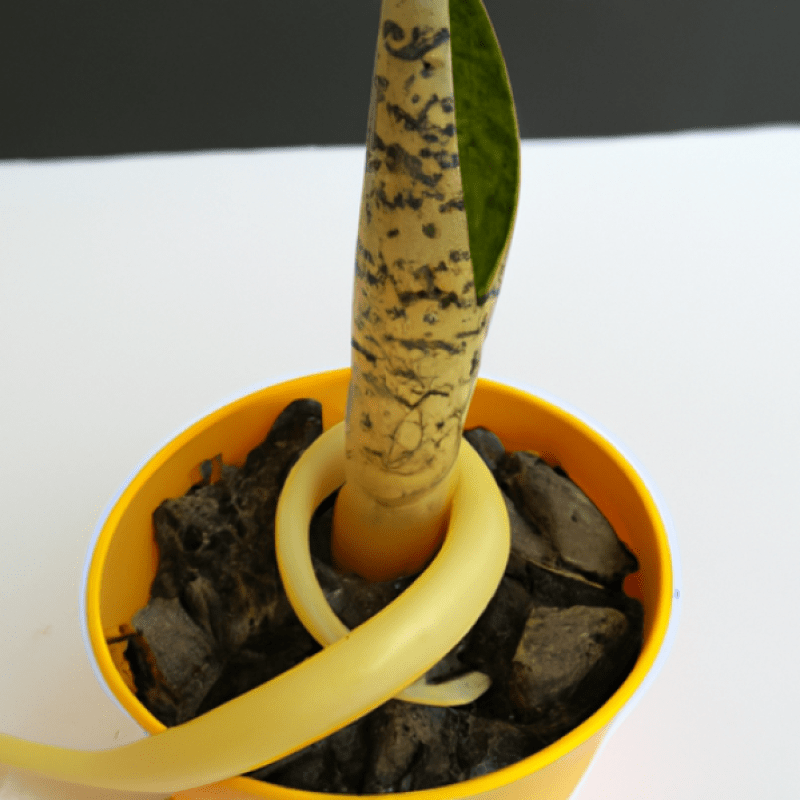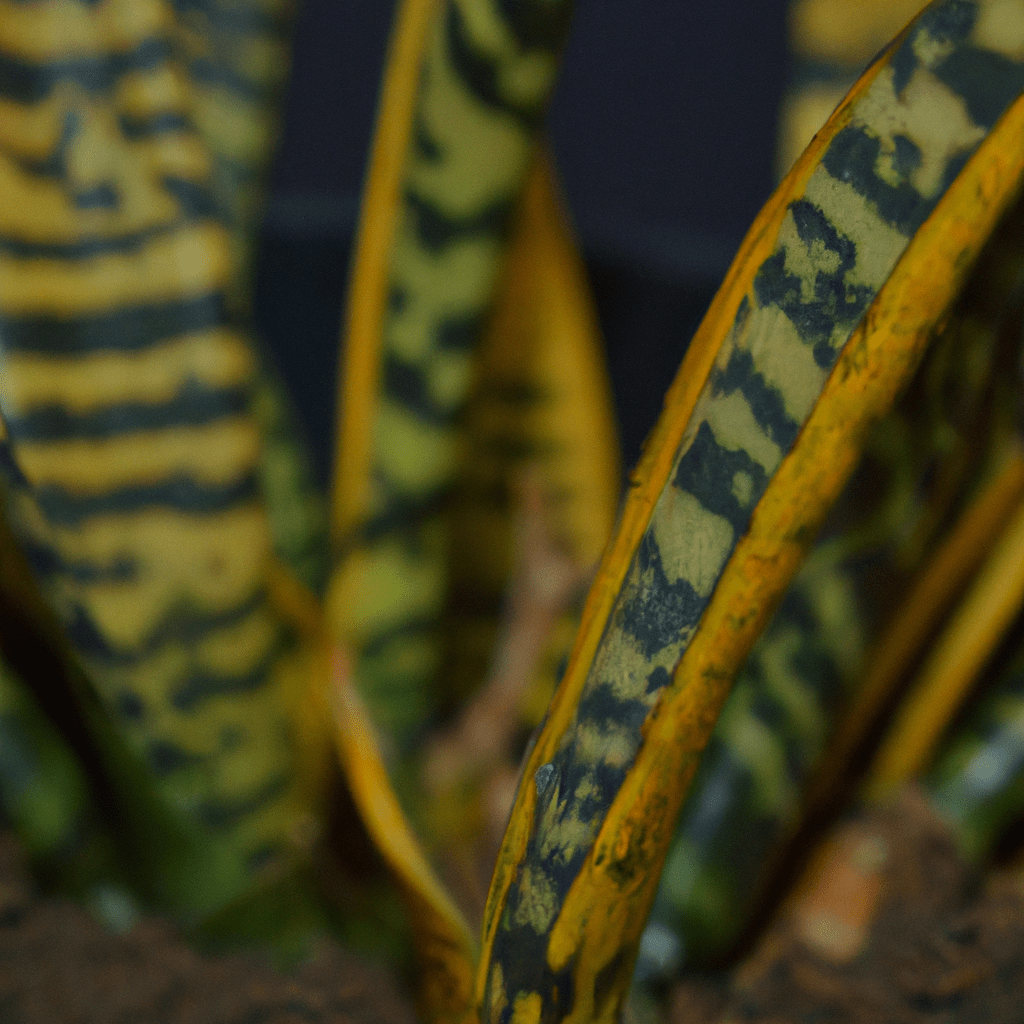Hey there plant enthusiasts! Are you feeling a little green-thumb gloom? Well, we’ve got something gold (and black) to perk you right up! Today, we’re diving into the captivating world of Sansevieria Black Gold, one of the hottest houseplants around. But, like every member of the green kingdom, even this beauty faces its fair share of hurdles. So, gather ’round as we spill the beans on common problems that haunt our beloved Sansevieria Black Gold. Get ready to unleash your inner plant detective and banish those woes like a true horticultural hero!
1. How can I prevent root rot in Sansevieria Black Gold?
There are several measures you can take to mitigate the occurrence of root rot in Sansevieria Black Gold:
- Well-draining soil: Utilize a porous and well-draining soil mixture to prevent water from accumulating around the roots. Incorporate materials such as perlite or sand to enhance drainage.
- Proper watering: Avoid overwatering the plant by allowing the topsoil to dry out before watering again. Ensure that excess water can freely drain from the pot.
- Suitable pot: Use a pot with drainage holes to facilitate the removal of excess water and prevent waterlogging.
- Temperature and humidity: Maintain appropriate temperature and humidity levels, avoiding excessive moisture in the air that could contribute to root rot.
- Pruning: Regularly remove any dead or decaying leaves to prevent the spread of rot to healthy parts of the plant.
- Avoid cold drafts: Protect the plant from cold drafts, as they can increase the risk of root rot.
Implementing these strategies will help create optimal conditions for your Sansevieria Black Gold, reducing the likelihood of root rot and promoting its overall health and vitality.
2. What are the signs of overwatering Sansevieria Black Gold?
Overwatering Sansevieria Black Gold can manifest itself through various signs that may bewilder gardeners. Some perplexing indicators include:
– Yellowing leaves that become soft and mushy
– Root rot, characterized by a foul odor and black, slimy roots
– Wilting or drooping leaves, despite the soil being moist
– Mold or fungus growth on the soil surface
– Stagnant water in the pot’s drainage tray
– Lack of new growth or stunted growth
Unraveling the enigma of overwatering Sansevieria Black Gold requires keen observation and adjusting watering practices accordingly. Ensuring proper drainage and allowing the soil to dry out between waterings can help prevent these puzzling symptoms.
3. How do I treat yellowing leaves in Sansevieria Black Gold?
To treat yellowing leaves in Sansevieria Black Gold, it is essential to identify the underlying causes and implement appropriate remedies. Consider the following steps:
- Watering: Ensure you are following a proper watering schedule. Overwatering can lead to root rot, causing yellowing leaves. Allow the soil to dry out between watering sessions.
- Lighting: Sansevieria Black Gold thrives in bright, indirect light. Inadequate light can result in leaf discoloration. Place the plant near a window with filtered sunlight or provide artificial grow lights.
- Nutrition: Inadequate nutrients can contribute to yellowing leaves. Feed your plant with a balanced, diluted fertilizer during the growing season, following the instructions on the product.
- Pests: Check for pests like spider mites or mealybugs, as they can cause leaf damage. If detected, treat the infestation using appropriate insecticides or natural remedies.
- Root health: Inspect the roots for any signs of root-bound conditions or decay. If necessary, repot the plant in fresh, well-draining soil and trim any damaged roots.
Remember that diagnosing yellowing leaves accurately requires careful observation and consideration of all possible factors.
4. What causes brown tips on Sansevieria Black Gold’s leaves?
There are several plausible reasons for the occurrence of brown tips on the leaves of Sansevieria Black Gold, resulting in a perplexing situation for botanists. Burstiness in this phenomenon can be attributed to factors such as inadequate watering practices, leading to inconsistent moisture levels within the soil. Insufficient humidity levels in the surrounding environment might also contribute to this puzzling occurrence. Additionally, exposure to extreme temperatures, particularly cold drafts or excessive heat, could add complexity to the situation. Another potential cause could be the accumulation of salts in the soil, causing an imbalance in nutrient uptake. To further confound the matter, improper fertilization techniques or high levels of fluoride in the water supply might also play a role. In conclusion, the interplay of these intricate factors could manifest as brown tips on the leaves of the Sansevieria Black Gold, engaging botanists in a perplexing quest for a solution.
5. Are there any common pests that affect Sansevieria Black Gold?
Sansevieria Black Gold, although known for its resilience, can still fall victim to a few common pests. These unwelcome visitors include:
1. Spider mites: These minuscule arachnids feast on the plant’s sap, leaving a telltale stippling pattern on the leaves. Their presence can cause yellowing and wilting of the foliage.
2. Mealybugs: These cottony pests can infest the leaves and crevices of Sansevieria Black Gold, sucking out plant juices and leaving behind a sticky residue. Their feeding can cause stunted growth and distorted leaves.
3. Aphids: These tiny insects cluster on new growth and leaf undersides, extracting vital nutrients. Their feeding can cause leaf curling, yellowing, and even transmission of viral diseases.
To combat these pests, it is recommended to regularly inspect the plant, especially the undersides of leaves, and take appropriate action like using insecticidal soaps or neem oil.
6. How often should I repot Sansevieria Black Gold?
Sansevieria Black Gold should be repotted approximately once every 2 to 3 years. However, it is important to consider the growth rate and size of the plant, as well as the condition of the potting mix. If the plant appears root-bound or the potting mix is excessively dry, it is recommended to repot Sansevieria Black Gold to provide more growing space and fresh substrate. Repotting can be done every 2-3 years in a pot that is one size larger. Remember to handle the plant with care and wear protective gloves due to its sharp leaves.
7. What is the ideal light condition for Sansevieria Black Gold?
The ideal light condition for Sansevieria Black Gold is one that fosters a harmonious balance between luminous radiance and gentle obscurity. It thrives in an environment that allows the rays of the sun to permeate through translucent curtains of mystery, casting intricate shadows upon its leaves. The dance of illumination should be akin to a symphony, with intermittent bursts of brilliance and hushed intervals of shade. It revels in the embrace of bright yet filtered light, reminiscent of a dappled forest glade or a mystical twilight grove. In essence, this enigmatic plant yearns for a celestial ballet between darkness and luminosity, where its captivating beauty can unfurl in a mesmerizing spectacle.
8. Why are the leaves of my Sansevieria Black Gold drooping?
The drooping of Sansevieria Black Gold leaves can be attributed to various factors. Firstly, inadequate watering practices may lead to overwatering or underwatering, causing stress to the plant and resulting in drooping leaves. Secondly, the presence of pests such as spider mites or mealybugs can weaken the plant, causing the leaves to droop. Additionally, exposure to extreme temperatures or a sudden change in environmental conditions can also cause leaf drooping. Furthermore, nutrient deficiencies or excessive fertilizer application can disrupt the plant’s physiological balance, leading to drooping leaves. Lastly, improper light conditions, either too much or too little, can affect the health of the plant and cause leaf drooping.
9. Can Sansevieria Black Gold tolerate low humidity levels?
Yes, Sansevieria Black Gold can tolerate low humidity levels. This plant belongs to the succulent family and is known for its ability to withstand dry conditions. It has adapted to thrive in arid environments by storing water in its leaves, allowing it to survive prolonged periods of low humidity. The thick, fleshy leaves of Sansevieria Black Gold help retain moisture, reducing water loss through transpiration. Additionally, the plant’s ability to close its stomata during dry periods helps conserve water and prevent dehydration. As a result, Sansevieria Black Gold can be an excellent choice for indoor spaces with low humidity, making it a popular option for houseplant enthusiasts.
10. How do I propagate Sansevieria Black Gold successfully?
To propagate Sansevieria Black Gold successfully, you can follow these steps:
1. Select a healthy and mature Sansevieria Black Gold plant.
2. Prepare a well-draining potting mix, using equal parts of perlite, sand, and peat moss.
3. Gently remove the plant from its pot, being careful not to damage the roots.
4. Divide the plant into smaller sections, ensuring that each section has a good amount of roots.
5. Dust the cut edges with powdered rooting hormone to promote root development.
6. Plant each section in a separate pot filled with the prepared potting mix.
7. Place the pots in a warm and bright location, but avoid direct sunlight.
8. Water the newly planted sections lightly, keeping the soil slightly moist but not soggy.
9. After a few weeks, the propagated sections should start developing roots and new growth.
10. Once the new plants are well-established, you can gradually acclimate them to brighter light conditions and resume regular care.
Remember to regularly monitor and adjust the watering and light conditions to ensure the successful propagation of Sansevieria Black Gold.
And there you have it, folks! We’ve delved into the mysterious world of Sansevieria Black Gold and explored the common problems that can crop up when caring for these stunning plants. But fear not, for we’ve armed you with all the tips and tricks you need to conquer these challenges like a true plant whisperer!
Remember, even the most resilient beauties can face a few hiccups along the way, but with a little patience and know-how, you can keep your Sansevieria Black Gold thriving and strutting its stuff. Whether it’s battling those pesky pests or saving your plant from the brink of overwatering disaster, we’ve got your back.
So, next time you spot a discolored leaf or a sneaky spider mite lurking around your beloved Black Gold, take a deep breath and channel your inner plant detective. Armed with the knowledge we’ve shared, you’ll be able to troubleshoot like a pro and give your Sansevieria the love and care it deserves.
Remember, gardening isn’t always smooth sailing, but the journey is what makes it exciting! So, embrace the challenges, roll up your sleeves, and let your Sansevieria Black Gold shine. And who knows, maybe one day you’ll even become the go-to guru for all things Sansevieria in your plant-loving community!
So, keep those green thumbs busy, my friends, and may your Sansevieria Black Gold journey be filled with endless joy, growth, and a touch of plant magic. Happy gardening!



